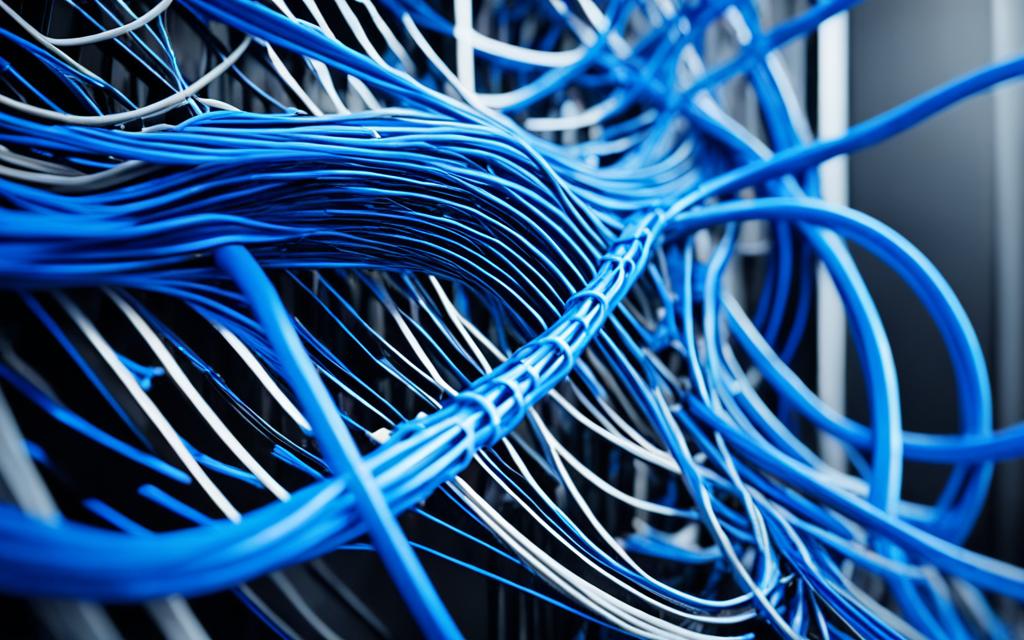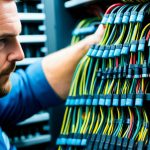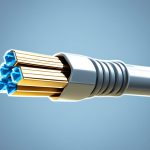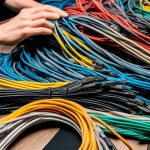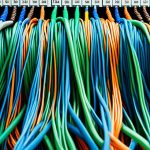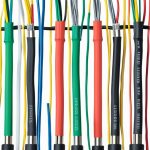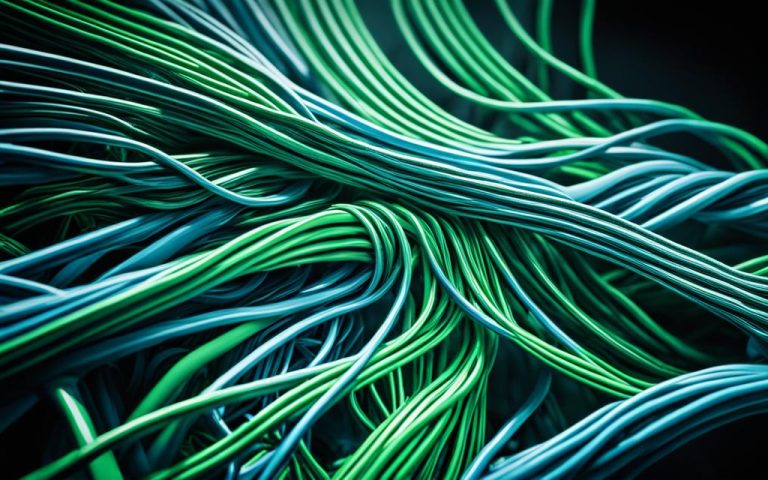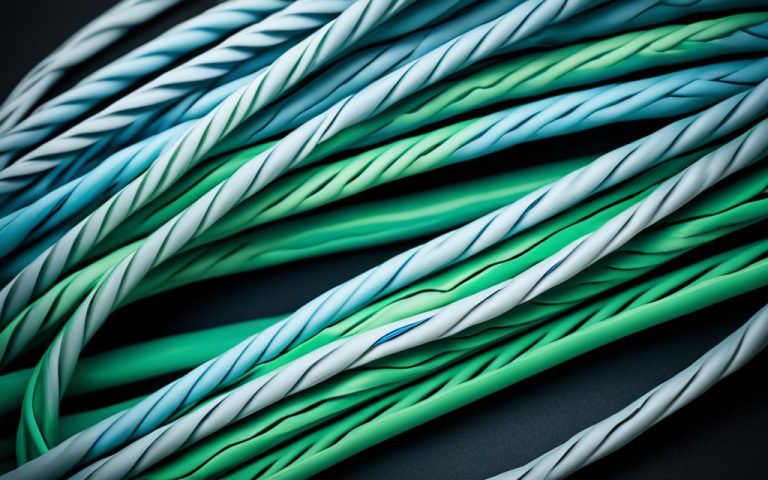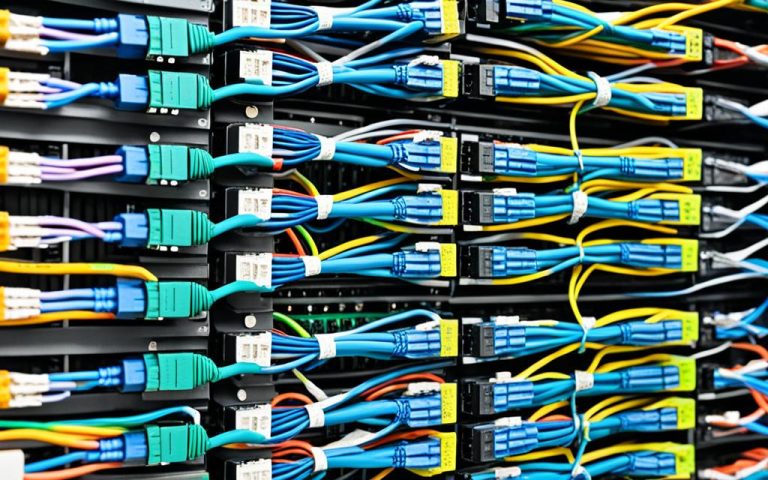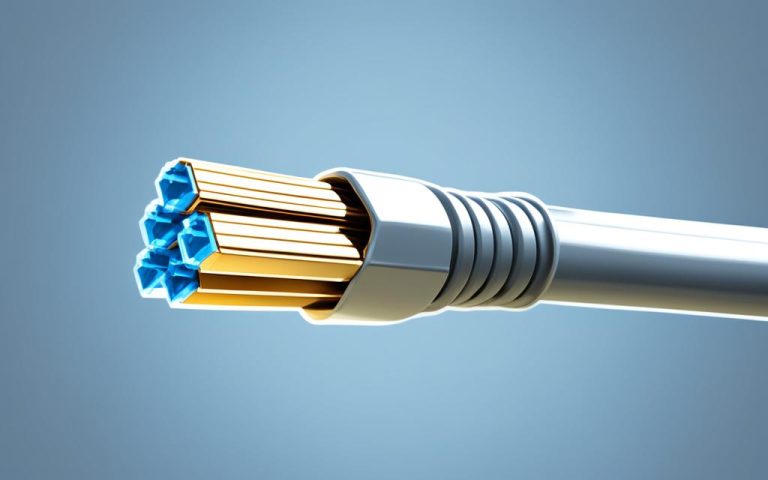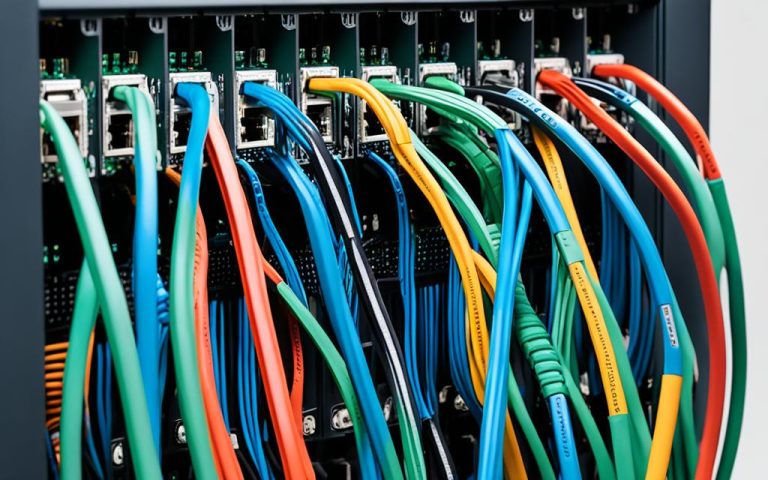When it comes to meeting the demands of high-frequency networking and advanced networking needs, selecting the right Ethernet cable is crucial. Whether you’re building a robust network infrastructure for a large corporation or setting up a reliable home network, the performance and reliability of your network depend on the quality of your Ethernet cables.
With the increasing reliance on digital connectivity and the growing demand for faster data transfer speeds, it’s essential to choose cables that can keep up with high-frequency networking requirements. From streaming high-definition videos to running complex network applications, advanced networking needs call for cables that can support the rapid transmission of data without compromising on performance.
By leveraging high-category cables specifically designed for advanced networking needs, you can ensure a seamless and efficient networking experience. These cables are engineered to deliver high-speed data transmission, low latency, and reliable connectivity, making them ideal for demanding applications that require real-time data processing and ultra-fast network speeds.
Whether you’re upgrading an existing network or building a new one from scratch, it’s essential to consider factors such as transmission speed, cable category, shielding, and compatibility when selecting Ethernet cables. This ensures that your network is not only future-proof but also capable of meeting the demands of high-frequency networking.
In the following sections, we will delve into the factors to consider in Ethernet cable selection, explore Ethernet extender solutions for long-distance transmission, understand the different categories of Ethernet cables, and highlight the importance of twisted pair cables in Ethernet networking. With this knowledge, you’ll be equipped to make informed decisions and create a robust network infrastructure that meets your advanced networking needs.
Factors to Consider in Ethernet Cable Selection
When it comes to selecting the right Ethernet cable for your networking project, there are several important factors to consider. These factors play a crucial role in ensuring optimal performance, reliability, and compatibility with your network infrastructure. By carefully evaluating these considerations, you can make an informed decision that meets the specific requirements of your network.
Transmission Speed
The transmission speed of the Ethernet cable is a critical factor to consider. It should align with the desired speed of your network to prevent bottlenecks and ensure smooth data transfer. Different Ethernet categories support varying speeds, ranging from the standard 1Gbps (Gigabit per second) to higher speeds like 10Gbps and beyond.
Distance
The distance over which the Ethernet connection needs to run is another crucial consideration. The length of the cable can impact signal strength and data transmission. It’s essential to choose a cable that can maintain reliable performance over the desired distance, whether it’s for short distances within an office or long runs in larger buildings.
Cable Category
Ethernet cables are categorized based on their capabilities and performance levels. Each category supports different transmission speeds and specifications. The common categories include Cat5, Cat5e, Cat6, Cat6a, and Cat7 cables. Understanding the distinctions between these categories allows you to select the appropriate cable that meets your network’s requirements.
Shielding
Shielding plays a crucial role in protecting Ethernet cables from external interference. Shielded cables, such as FTP (Foil Twisted Pair) and STP (Shielded Twisted Pair), provide better protection against electromagnetic interference (EMI) and crosstalk. Unshielded cables (UTP – Unshielded Twisted Pair) are more susceptible to interference but are cost-effective for short-distance installations.
Installation Environment
The installation environment has a significant impact on cable performance and longevity. Factors such as electromagnetic fields (EMF), temperature, moisture, and physical stress can affect cable integrity. It’s important to choose cables rated for the specific environmental conditions to ensure reliable operation.
Cost, Future Proofing, Compatibility, Code Compliance, and Installation Method
Considerations such as cost, future proofing, compatibility with existing hardware, code compliance, and installation method are also essential when selecting Ethernet cables. Your budget, long-term network expansion plans, compliance requirements, and preferred installation techniques will influence your cable selection process.
Taking all these factors into account will help you make an informed decision when choosing the right Ethernet cable for your networking needs. By selecting the appropriate cable, you can ensure optimal performance, reliability, and compatibility with your network infrastructure.
Ethernet Extender Solutions for Long-Distance Transmission
Ethernet extender solutions offer a practical way to overcome the limitations of the standard Ethernet distance limit. These solutions enable long-distance transmission of Ethernet signals, extending the reach of your network beyond the typical 100 meters or 328 feet. With Ethernet extender solutions, you can transmit data over distances up to 9,000 feet or 2,743 meters, providing reliable connectivity even in large office buildings or industrial settings.
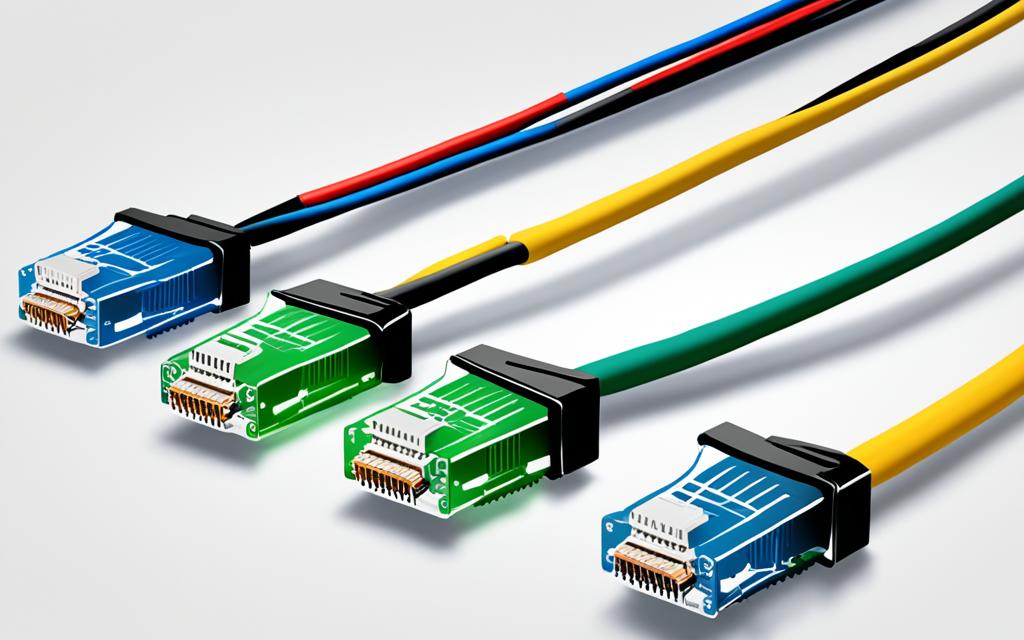
The Benefits of Ethernet Extender Solutions
Implementing Ethernet extender solutions offers several advantages for businesses and organizations that require long-distance transmission capabilities. Here are some key benefits:
- Extended Range: Ethernet extender solutions extend the reach of your network, allowing you to establish connections over greater distances.
- Cost-Effective: By utilizing Ethernet extender solutions, you can avoid the expense and complexity of deploying additional networking equipment or infrastructure.
- Easy Installation: Ethernet extender solutions are typically easy to install, requiring minimal setup and configuration.
- Reliable Performance: These solutions maintain the high-speed and quality of Ethernet connections, ensuring reliable data transmission over long distances.
Use Cases for Ethernet Extender Solutions
Ethernet extender solutions are particularly useful in various scenarios where the standard distance limit of Ethernet cables is insufficient. Here are a few common use cases:
“In large office buildings, where physical distance between network devices can surpass the standard limit, Ethernet extender solutions provide an effective means to maintain connectivity and enable seamless communication across the premises.”
“Industrial settings, such as manufacturing facilities or warehouses, often require extended network coverage to connect distant devices. Ethernet extender solutions ensure reliable communication, enabling efficient operations and streamlined processes.”
By leveraging Ethernet extender solutions, businesses can extend the reach of their networks, improving connectivity and enabling efficient collaboration across large spaces. Whether it’s an expansive corporate campus or a vast production facility, Ethernet extender solutions provide a reliable, cost-effective solution for long-distance transmission needs.
Understanding the Different Categories of Ethernet Cables
When it comes to setting up a reliable and high-performing network, choosing the right category of Ethernet cable is crucial. Ethernet cables are categorized based on their capabilities and performance levels. Let’s take a closer look at the different categories of Ethernet cables:
Cat5:
The Cat5 cable is one of the earliest generations of Ethernet cables. While it was once widely used, it has become outdated for most modern network applications. It supports speeds up to 100 Mbps and is suitable for basic networking needs.
Cat5e:
The Cat5e cable, also known as Category 5e, is an enhanced version of the Cat5 cable. It offers improved performance and is capable of supporting speeds up to 1 Gbps. Cat5e cables are widely used in residential and small office networks.
Cat6:
The Cat6 cable, or Category 6, is designed to handle higher data transfer rates. It supports speeds up to 10 Gbps and provides better performance and more reliable connectivity compared to Cat5e cables. Cat6 cables are ideal for demanding network environments.
Cat6a:
The Cat6a cable, or Category 6a, is an advanced version of the Cat6 cable. It offers even higher data transfer rates, up to 10 Gbps at longer distances, and provides superior performance in terms of reduced crosstalk and interference. Cat6a cables are suitable for high-bandwidth applications and larger network setups.
Cat7:
The Cat7 cable, or Category 7, is the latest and most advanced Ethernet cable. It supports speeds up to 10 Gbps and offers excellent performance, shielding, and noise reduction capabilities. Cat7 cables are mainly used in data centers, server rooms, and professional networking environments.
Choosing the right Ethernet cable depends on the specific needs of your network. Here’s a comparison table summarizing the key features and specifications of each category:
| Cable Category | Maximum Speed | Performance Level |
|---|---|---|
| Cat5 | 100 Mbps | Basic |
| Cat5e | 1 Gbps | Standard |
| Cat6 | 10 Gbps | Enhanced |
| Cat6a | 10 Gbps (at longer distances) | Advanced |
| Cat7 | 10 Gbps | High-End |
By understanding the differences between the various categories of Ethernet cables, you can make an informed decision that aligns with your network requirements and ensures optimal performance.

The Importance of Twisted Pair Cables in Ethernet Networking
Twisted pair cables play a vital role in Ethernet networking, serving as the industry standard for reliable and efficient data transmission. These cables are designed with two wire conductors that are twisted together, providing numerous benefits for network connectivity.
“Twisted pair cables are the backbone of Ethernet networking, offering a robust and cost-effective solution for data transmission.”
The primary advantage of twisted pair cables lies in their ability to reduce interference and crosstalk, ensuring a clear and uninterrupted signal flow. By twisting the wire conductors tightly together, these cables minimize the electromagnetic interference (EMI) generated by nearby electrical sources, such as power lines or other cables.
Additionally, the twisted configuration of the cables helps to mitigate the effects of crosstalk, which is the unwanted electrical coupling between adjacent wire pairs. Crosstalk can lead to signal distortion and data errors, compromising the overall performance of the network. However, the twisting pattern of twisted pair cables helps to cancel out crosstalk, maintaining the integrity of the transmitted data.
There are six different categories of copper conductor Ethernet cables, each tailored to specific networking requirements. These categories range from Category 5e (Cat5e) to Category 7 (Cat7), with each offering varying levels of protection against interference and different transmission speeds.
Unshielded twisted pair (UTP) cables are the most commonly installed type of Ethernet cables. They strike a balance between performance and cost-effectiveness, making them an ideal choice for most Ethernet networking applications. UTP cables are suitable for short to medium distances and provide reliable data transmission for everyday network usage.
Below is a table summarizing the different categories of Ethernet cables and their characteristics:
| Ethernet Cable Category | Maximum Transmission Speed | Interference Protection |
|---|---|---|
| Cat5e | 1 Gbps | Good |
| Cat6 | 10 Gbps | Better |
| Cat6a | 10 Gbps | Best |
| Cat7 | 10 Gbps | Best |
With the ever-increasing demand for faster and more reliable networking, the importance of utilizing twisted pair cables cannot be overstated. These cables provide the foundation for seamless data transmission, enabling organizations to achieve optimal performance and efficiency in their Ethernet networks.
| Cable Category | Maximum Transmission Speed | Interference Protection |
|---|---|---|
| Cat5e | 1 Gbps | Good |
| Cat6 | 10 Gbps | Better |
| Cat6a | 10 Gbps | Best |
| Cat7 | 10 Gbps | Best |
“`
Conclusion
High-frequency networking plays a crucial role in meeting the advanced networking needs of organizations. To ensure a reliable and high-performing network, it is essential to carefully select the appropriate Ethernet cable. Factors such as transmission speed, distance, cable category, shielding, installation environment, cost, future proofing, compatibility, code compliance, and installation method should be taken into consideration.
Ethernet extender solutions offer a viable option for extending the distance limit of Ethernet connections, enabling long-distance transmission. This is particularly useful in scenarios where the standard distance limit of 100 meters is insufficient, such as in large office buildings or industrial settings.
Understanding the different categories of Ethernet cables is key to making informed decisions about network infrastructure. Categories such as Cat5, Cat5e, Cat6, Cat6a, and Cat7 offer varying speeds and performance levels. Additionally, twisted pair cables, such as unshielded twisted pair (UTP) cables, are industry-standard and help reduce interference and crosstalk.
By leveraging high-category Ethernet cables and considering the aforementioned factors, organizations can unlock the full potential of high-frequency networking for their advanced networking needs.
FAQ
What factors should I consider when selecting an Ethernet cable?
When selecting an Ethernet cable, you should consider factors such as transmission speed, distance, cable category, shielding, installation environment, cost, future proofing, compatibility, code compliance, and installation method.
How do Ethernet extender solutions work?
Ethernet extender solutions extend the distance limit of Ethernet connections beyond the standard 100 meters or 328 feet. They allow for long-distance transmission of Ethernet signals, making them useful in large office buildings or industrial settings.
What are the different categories of Ethernet cables?
There are several categories of Ethernet cables, including Cat5, Cat5e, Cat6, Cat6a, and Cat7. Each category offers different speeds and performance levels.
Why are twisted pair cables important in Ethernet networking?
Twisted pair cables are the industry standard for Ethernet networking. They have two wire conductors that are twisted together, reducing interference and crosstalk.

